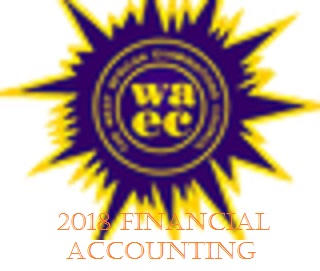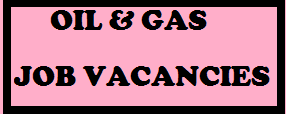2018 WAEC Financial Accounting Questions & Answers Exposed – related are WAEC Financial Accounting Questions, WAEC 2017 Financial Accounting Questions And Answers, WAEC Accounting Past Questions, Financial Accounting Questions And Answers Download, WAEC Financial Accounting 2018, GCE Financial Accounting Answer, 2018 WAEC Financial Accounting Expo, WAEC GCE 2017 Financial Accounting and 2018 WAEC Financial Accounting Questions & Answers Exposed.
Others GCE past questions:
Table of Contents
Others are GCE past questions on English language, WAEC Biology question and answer 2018, marking scheme for WAEC .maths, physics practical, and area of concentration for WAEC 2018. These are essential to your making good grades in this 2018 May/June WAEC examinations to qualify you for university admission this year. 2018 WAEC Financial Accounting Questions & Answers Exposed
In this post are exposed regularly repeated WAEC Financial Accounting Questions – Objectives and Theory questions and answers for 2018 May/June SSCE exam that holds on 19/4/2018. Get them in your finger tips and you are sure of a high grade in this exams. 2018 WAEC Financial Accounting Questions & Answers Exposed
WHAT WAEC STAND FOR
The West African Examinations Council (WAEC) is the West African countries Examination Body. It conducts the West African Senior School Certificate Examination for in-house school students and General Certificate Examination for private candidates in West African Countries. These are entry qualification examinations for higher education institutions in these countries.
2018 WAEC Financial Accounting Questions & Answers Exposed
WAEC RESULTS & HIGHER SCHOOL ADMISSION
As you know, no University, Polytechnic, or college of education in these countries would admit you into any of their courses without a good grade in any of these examinations. That is why over three million candidates register and take these subject exams annually.
Consequently, 2018 WAEC Financial Accounting Questions & Answers Exposed, our goal here is to help you achieve this your life dream. Listed here are Financial Accounting, Objective and Theory questions and answers relevant to 19/4/2018 Financial Accounting Subject examination.
2018 WAEC Financial Accounting Questions & Answers Exposed
THE OBJETIVE AND THEORY ANSWERS
1DDBABBBDDB,
11BAACCDDBBD
21BDCDCBCBCD
31CDDBBBDCDB
41ACBABAAACD
1a) A control account, often called a controlling account, is a general ledger account that summarizes and combines all of the subsidiary accounts for a specific type. In other words, it’s a summary account that equals the sum of the subsidiary account and is used to simplify and organize the general ledger.
1b) i)Control accounts provides a check on the accuracy of entries made in the personal accounts in the sales ledger and purchase ledger
ii)It could also assist in the location of errors, where posting to the control accounts are made daily or weekly, or even monthly
iii)Where there is a separate of clerical bookkeeping duties, the control account provides an internal check.
1ci) Uses of Accounting ratios/Financial ratios
Financial ratios are not very useful on a stand-alone basis; they must be benchmarked against something. Analysts compare ratios against the following:
1. The Industry norm – This is the most common type of comparison. Analysts will typically look for companies within the same industry and develop an industry average, which they will compare to the company they are evaluating. Ratios per industry are also provided by Bloomberg and the S&P. These are good sources of general industry information. Unfortunately, there are several companies included in an index that can distort certain ratios. If we look at the food and beverage ratio index, it will include companies that make prepared foods and some that are distributors. The ratios in this case would be distorted because one is a capital-intensive business and the other is not. As a result, it is better to use a cross-sectional analysis, i.e. individually select the companies that best fit the company being analyzed.
2. Aggregate economy – It is sometimes important to analyze a company’s ratio over a full economic cycle. This will help the analyst understand and estimate a company’s performance in changing economic conditions, such as a recession.
3. The company’s past performance – This is a very common analysis. It is similar to a time-series analysis, which looks mostly for trends in ratios.
1cii) Limitations to Accounting ratios/Financial ratios
There are some important limitations of financial ratios that analysts should be conscious of:
i)Many large firms operate different divisions in different industries. For these companies it is difficult to find a meaningful set of industry-average ratios.
ii)Inflation may have badly distorted a company’s balance sheet. In this case, profits will also be affected. Thus a ratio analysis of one company over time or a comparative analysis of companies of different ages must be interpreted with judgment
2a. Working capital is the amount of a company’s current assets minus the amount of its current liabilities.
2b. Capital employed, also known as funds employed, is the total amount of capital used for the acquisition of profits. It is the value of all the assets employed in a business and can be calculated by adding fixed assets to working capital or subtracting current liabilities from total assets.
2c. A fixed asset is an item with a useful life greater than one reporting period, and which exceeds an entity’s minimum capitalization limit .
2d. A current asset is cash and any other company asset that will be turning to cash within one year from the date shown in the heading of the company’s balance sheet. (If a company has an operating cycle that is longer than one year, an asset that will turn to cash within the length of its operating cycle is considered to be a current asset.)
2e. The rate of stock turnover is a measure of the number of times inventory is sold or used in a time period such as a year. The equation for inventory turnover equals the cost of goods sold or net sales divided by the average inventory.
3a. The accrual concept in accounting means that expenses and revenues are recorded in the period they occur, whether or not cash is involved.
3b. The business entity concept states that the transactions associated with a business must be separately recorded from those of its owners or other businesses. Doing so requires the use of separate accounting records for the organization that completely exclude the assets and liabilities of any other entity or the owner.
3c. Dual Aspect Concept, also known as Duality Principle, is a fundamental convention of accounting that necessitates the recognition of all aspects of an accounting transaction.
3d. PERIODICITY CONCEPT is the concept that each accounting period has an economic activity associated with it, and that the activity can be measured, accounted for, and reported upon.
3e. The going concern principle is the assumption that an entity will remain in business for the foreseeable future. Conversely, this means the entity will not be forced to halt operations and liquidate its assets in the near term at what may be very low fire-sale prices.

2018 WAEC Financial Accounting Questions & Answers Exposed
4a) A company is a legal entity made up of an association of persons, be they natural, legal, or a mixture of both, for carrying on a commercial or industrial enterprise.
4bi) An ordinary share represents equity ownership in a company proportionally with all other ordinary shareholders, according to their percentage ownership in the company. All other shares of a company’s stock are, by
definition , preferred shares
4b(ii)Preference shares, more commonly referred to as preferred stock, are shares of a company’s stock with dividends that are paid out to shareholders before common stock dividends are issued. If the company enters bankruptcy, the shareholders with preferred stock are entitled to be paid from company assets first.
4b(iii) A debenture is a type of debt instrument that is not secured by physical assets or collateral.
Debentures are backed only by the general creditworthiness and reputation of the issuer. Both corporations and governments frequently issue this type of bond to secure capital.
4b(iv) The authorised capital of a company (sometimes referred to as the authorised share capital, registered capital or nominal
capital, particularly in the United States) is the maximum amount of share capital that the company is authorised by its constitutional documents to issue (allocate) to shareholders.
5a) journal
(i)suspense purchase Dr GHC(19,000) , Cr GHC(19,000)
(ii)returns inwards suspenses Dr(8000), Cr(8000)
(iii)suspense cashbook Dr(19,600), Cr(19,000)
(iv)suspense cash ook Dr(98,000), Cr(98,000)
(v) repairs of plant and machinery Dr(11,000) , Cr(11,000)
(vi) customer sales Dr(158,980), Cr(158,950)
(vii) supplier suspense(25,500 *2) Dr(51,000) cr(51,000)
(5b)
Suspense A/C:
Debit side:
purchases(19,000)
cash book(19600)
cash book(98000)
credit side;
returns inward(8,000)
supplier (51,000)
c/f (77,600)
136,600
No.5) use the image below
No.6) use the image belowNo7) use the image belowNo.8) use the image below
(9)king star enterprises
departmental, trading, profit & loss acct
Debit side:
A le, B le
opening stock: 1000, 800
add purchases: 147200, 132800
148200, 123,600
add carriage: 1000, 1000
149200, 124600
less closing stock: 1200, 600
148000,124000
gross profit: 12000,16000
160000, 140000
office exp: 480, 120
rates: 176, 94
insurance: 692, 173
light: 384, 96
repairs: 240, 60
net profit: 10028, 159507
12000, 160000
credit side
A le, B le
sales: 160000,140000
160000, 140000
gross profit: 12000, 16000
12000, 160000
2018 WAEC Financial Accounting Questions & Answers Exposed
REQUIREMENTS:
If you desire further assistance, or have questions to ask, send them through the comment box on this page. Remember to share this through our social media share buttons below this page.
If you click to follow us on our Facebook handles you will ensure a regular update on matters that affect your performance in your exams.
Get other examinations matters here, Good luck.
2018 WAEC Financial Accounting Questions & Answers Exposed
And, finally, if you desire professional services on Business plan and feasibility study, C.A.C. Incorporation, Accounting and Auditing, Tax Management, Mining, travels and tours, feasibility analysis, real estate management, then contact [email protected] or +234 8034347851.

Deacon Anekperechi Nworgu, a seasoned economist who transitioned into a chartered accountant, auditor, tax practitioner, and business consultant, brings with him a wealth of industry expertise spanning over 37 years.



